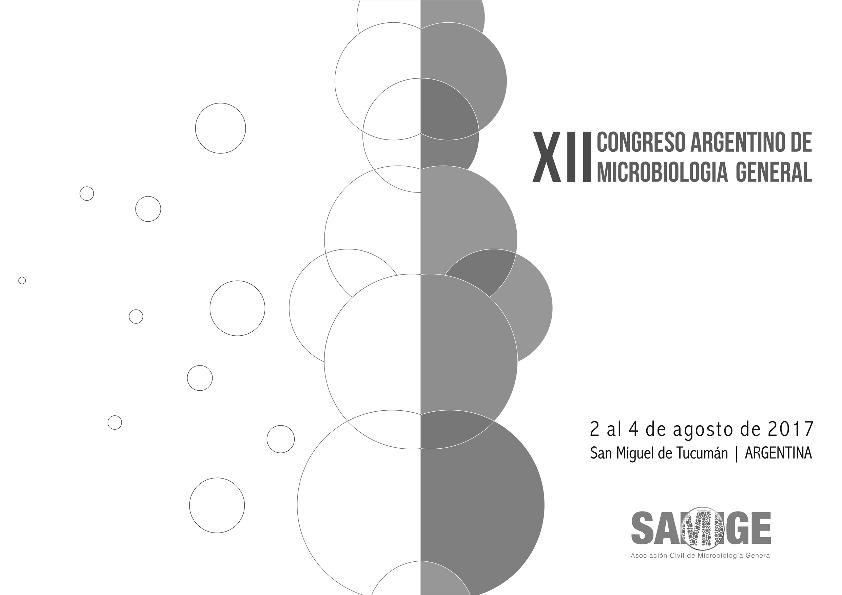Mostrar el registro sencillo del ítem
dc.contributor.author
Bourguignon, Natalia

dc.contributor.author
Alessandrello, Mauricio

dc.contributor.author
Lerner, Betiana

dc.contributor.author
Perez, Maximiliano Sebastian

dc.contributor.author
Ferrero, Marcela Alejandra

dc.date.available
2023-02-17T15:22:43Z
dc.date.issued
2017
dc.identifier.citation
Microfluidic Devies for the Assessment of the PAHs Removal Capacity by Bacterial Biofilms; XII Congreso Argentino de Microbiología General; San Miguel de Tucumán; Argentina; 2017; 1-2
dc.identifier.uri
http://hdl.handle.net/11336/188402
dc.description.abstract
Microfluidics is the study and manipulation of fluids in micrometer scale structures. It provides promising systems for lab-on-a-chip (LOC) applications1. LOC offers faster, parallel, and high throughput (bio)chemical analysis and screening on miniaturized systems with several advantages such as reductions in sample volumes and manufacturing cost2. The LOC application for the study of organisms is an emerging field, where miniaturization system benefits offer a precise spatiotemporal control over the microenvironments of soil organisms with approximation of natural conditions. The aim of our work is to propose the microfluidic device as a platform to study the capacity of PAH degradation by bacterial biofilms. The microdevices were built with glass base and PDMS cover. PDMS was mixed with curing agent in a 10:1 ratio and then the mixture was placed under vacuum to remove air bubbles, poured onto the SU8-mold and cured in an oven at 80 °C overnight3. The microchip consists of an input and an output connected with four microchannels of 496 μm wide with 4 cisterns in each of 1690 μm in width and a total internal volume of 32.22 μL. The microchannels was washed with ethanol 70% and it was desinfected using NaOH 0.5 mol.L-1 for 30 minutes. For biofilm formation on the microchannels, a continuous culture of the bacterial strain Pseudomonas monteilii P26 was carried out using the microchip as the bioreactor. After 3 days of culture, a good cell adhesion to the substrate and biofilm formation inside the microchannels were observed. After, a PAH suspension containing 50 ppm of acenaphthene, fluoranthene and pyrene was pumped through the microchip in a closed loop at ambient temperature for 4 days. After this time, the remaining PAH in the system were solubilized with acetone and quantified by RT-HPLC. Results showed 79.2%, 56.2% and 55.0% removal of acenaphthene, fluoranthene and pyrene respectively in the microdevice. For comparison, a culture of planktonic cells of P. monteilii P26 was incubated in presence of the same PAHs concentration for 30 days. This culture removed 76.96% acenaphthene but no significant removal of fluoranthene and pyrene was observed. Our results have shown that using the microchip as system improve the capacity of the PAH removal capacity of P. monteilii P26 by biofilm formation and it has proved to be a valuable tool for quickly screening PAH removal capacity of other biofilms.
dc.format
application/pdf
dc.language.iso
eng
dc.publisher
Asociación Argentina de Microbiología

dc.rights
info:eu-repo/semantics/openAccess
dc.rights.uri
https://creativecommons.org/licenses/by-nc-sa/2.5/ar/
dc.subject
MICROFLUIDIC DEVICES
dc.subject
PAH
dc.subject
BIOFILM
dc.subject
LAB ON A CHIP
dc.subject.classification
Bioremediación, Diagnóstico Biotecnológico en Gestión Medioambiental

dc.subject.classification
Biotecnología del Medio Ambiente

dc.subject.classification
INGENIERÍAS Y TECNOLOGÍAS

dc.title
Microfluidic Devies for the Assessment of the PAHs Removal Capacity by Bacterial Biofilms
dc.type
info:eu-repo/semantics/publishedVersion
dc.type
info:eu-repo/semantics/conferenceObject
dc.type
info:ar-repo/semantics/documento de conferencia
dc.date.updated
2023-02-10T17:54:26Z
dc.journal.pagination
1-2
dc.journal.pais
Argentina

dc.journal.ciudad
San Miguel de Tucumán
dc.description.fil
Fil: Bourguignon, Natalia. Universidad Tecnológica Nacional. Facultad Regional Haedo; Argentina. Consejo Nacional de Investigaciones Científicas y Técnicas. Centro Científico Tecnológico Conicet - Tucumán. Planta Piloto de Procesos Industriales Microbiológicos; Argentina
dc.description.fil
Fil: Alessandrello, Mauricio. Consejo Nacional de Investigaciones Científicas y Técnicas. Centro Científico Tecnológico Conicet - Tucumán. Planta Piloto de Procesos Industriales Microbiológicos; Argentina
dc.description.fil
Fil: Lerner, Betiana. Universidad de Buenos Aires. Facultad de Ingeniería. Instituto de Ingeniería Biomédica; Argentina. Universidad Tecnológica Nacional. Facultad Regional Haedo; Argentina
dc.description.fil
Fil: Perez, Maximiliano Sebastian. Universidad de Buenos Aires. Facultad de Ingeniería. Instituto de Ingeniería Biomédica; Argentina. Universidad Tecnológica Nacional. Facultad Regional Haedo; Argentina
dc.description.fil
Fil: Ferrero, Marcela Alejandra. Universidad Nacional de Tucumán. Facultad de Bioquímica, Química y Farmacia; Argentina. Consejo Nacional de Investigaciones Científicas y Técnicas. Centro Científico Tecnológico Conicet - Tucumán. Planta Piloto de Procesos Industriales Microbiológicos; Argentina
dc.relation.alternativeid
info:eu-repo/semantics/altIdentifier/url/https://samige.org.ar/wp-content/uploads/2022/10/Libro-SAMIGE-2017.pdf
dc.conicet.rol
Autor

dc.conicet.rol
Autor

dc.conicet.rol
Autor

dc.conicet.rol
Autor

dc.conicet.rol
Autor

dc.coverage
Internacional
dc.type.subtype
Congreso
dc.description.nombreEvento
XII Congreso Argentino de Microbiología General
dc.date.evento
2017-08-02
dc.description.ciudadEvento
San Miguel de Tucumán
dc.description.paisEvento
Argentina

dc.type.publicacion
Book
dc.description.institucionOrganizadora
Asociación Argentina de Microbiología
dc.source.libro
XII Congreso Argentino de Micorbiología General
dc.date.eventoHasta
2017-08-04
dc.type
Congreso
Archivos asociados
